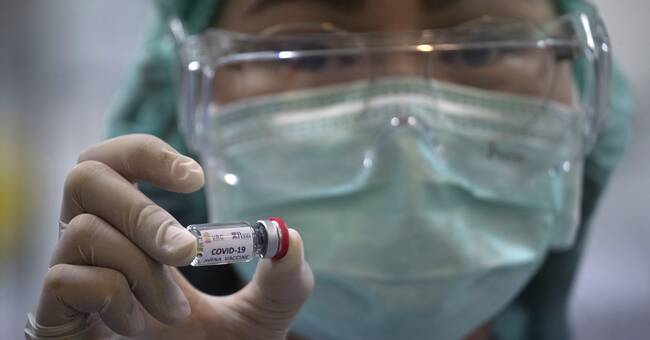The pharmaceutical giant Pfizer has launched a 90 percent effective vaccine against the coronavirus.
Eleven vaccines are in the final stages of their clinical trials and six have been approved for early or limited use.
But how much do we really know about the different vaccines?
- All these vaccines will work a little differently.
Pfizer, for example, requires minus 80 degrees of storage.
And that means that developing countries can probably find it very difficult to access it.
Even here in Sweden, there must be freezers that can handle minus 80 at health centers and everything, so here too it will be a logistical challenge, says Matti Sällberg, vaccine researcher at Karolinska Institutet.
Traditional vaccine technology involves injecting a weakened virus into the body that activates the body's own immune system.
The well-proven method can also protect against future virus outbreaks but activates antibodies and not T cells.
Antibodies and T cells are two different parts of the immune system, which can have different strengths in the body's way of attacking the coronavirus.
Vector, DNA and RNA vaccine
Modern vaccine techniques can activate the T-cell defense, but these vaccines have their own advantages and disadvantages.
So-called vector vaccines are one of the new types of vaccines and these genetically modify harmless viruses that are injected with parts of the coronavirus into their genome.
Sweden has purchased 7 million doses of vector vaccine from Astra Zeneca, which are expected to be available at the end of December.
- The advantage of these is that it provides a large-scale production and that they can be freeze-dried, which makes them easier to store.
The disadvantage is that if you have taken these vaccines once, you can become immune to the virus vector and may not be vaccinated more than once with that particular vaccine, says Matti Sällberg.
The RNA vaccine used by Pfizer triggers the body's immune system by injecting a piece of the coronavirus' gene.
This vaccine can be injected several times but must be stored very cold.
Earlier this week, Pfizer was the first to present figures that the vaccine had an effective protective effect for 90 percent of the tens of thousands of subjects in their final phase 3 study.
Who gets what?
In Sweden, different groups can receive different vaccines.
- I do not think that the vaccine will be distributed between regions per se, there will probably be a fairly even distribution.
But different vaccines will suit different groups better.
For example, older people who often have a weaker immune system probably need a vaccine that can be given several times, while perhaps young people can get a vaccine where one dose is enough, says Matti Sällberg.

